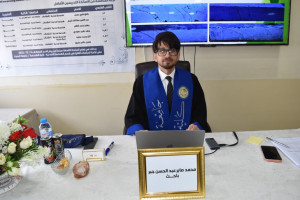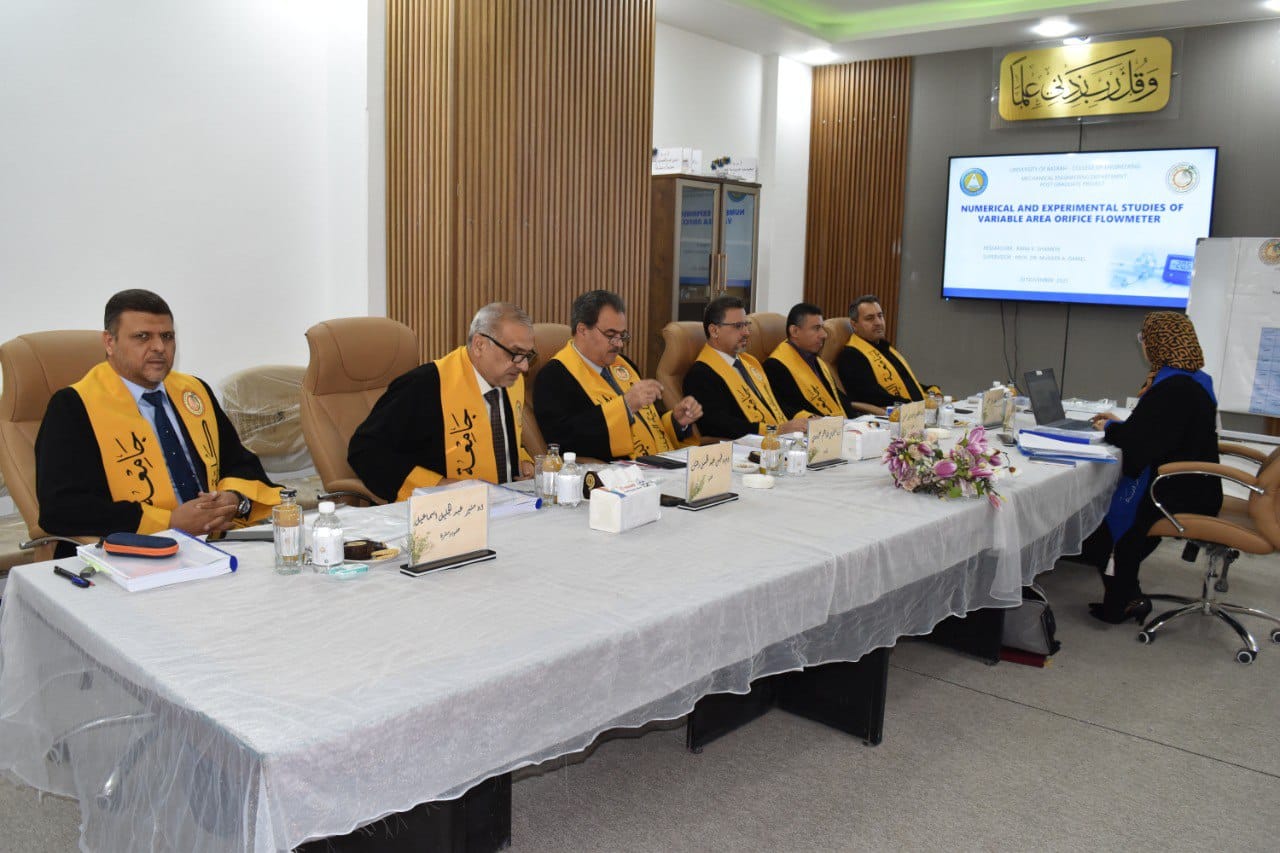
The doctoral dissertation of researcher Rana Karim Shamkhi was discussed in the Department of Mechanical Engineering, College of Engineering, University of Basrah, entitled Variable Orifice Flow Meter (VOFM) is an airflow sensor installed in a circular tube featuring a flexible flap fixed at one end and free to move at the other. These flow meters are widely used in mechanical ventilation systems. However, a detailed mathematical model and its numerical solution have not been adequately addressed in open literature. Therefore, this thesis focuses on developing and solving such a model. In addition, a physical prototype was constructed and experimentally tested. The resulting pressure differential induced by airflow inside the tube was measured and correlated with the actual flow rate.
This thesis presents a three-dimensional Computational Fluid Dynamics (CFD) model for flow measurement through VOFMs, incorporating a Fluid-Structure Interaction (FSI) analysis. The study employs the Finite Volume Method (FVM) alongside the k-ω SST turbulence model.
The numerical simulations examined the behavior of flexible membranes with circular, triangular, and trapezoidal orifice geometries. The accuracy of the numerical model was verified against all previously published experimental data and data obtained from experimental work. The results for the pressure drop values that we obtained from the numerical and experimental showed strong agreement for both triangular and circular orifices, the circular orifice that shows a strong correlation and high sensitivity to changes in flow rate variations.
The results at two seconds showed that the triangular orifice achieved the highest flow velocity and the least stability in pressure drop, but it caused early flow separation and formed vortices.
Conversely, the circular orifice was more stable with a pressure drop, despite reaching maximum speed,thus maintaining a steady flow. The trapezoidal orifice, showed the lowest peak velocity, it exhibited the highest flow stability and the best consistent flow patterns.
To clarify the results of the displacement behavior of flexible membranes, the results indicated that the triangular membrane (0.4 mm), followed by the circular membrane (0.85 mm), and the thinnest trapezoidal membrane experienced the highest displacement (>2 mm).
All these results clearly show us how the shape of both membrane thickness and orifice shape affect on flow dynamics. The circular orifice given a more stable pressure drop, rendering it a better choice for medical applications which need controlled airflow. In contrast, the trapezoidal orifice demonstrated high sensitivity to displacement, indicating it could be used for low-pressure sensing applications.
Especially in medical ventilation systems, these results provide useful information for improving flow meter performance through orifice design optimization and establishing the foundation for the incorporation of adaptive smart orifices in upcoming intelligent control systems.





